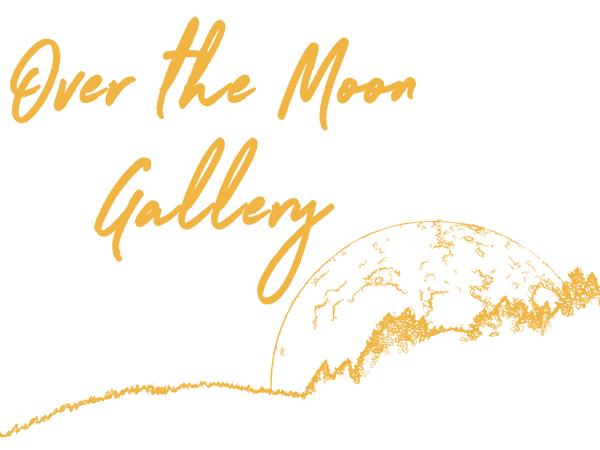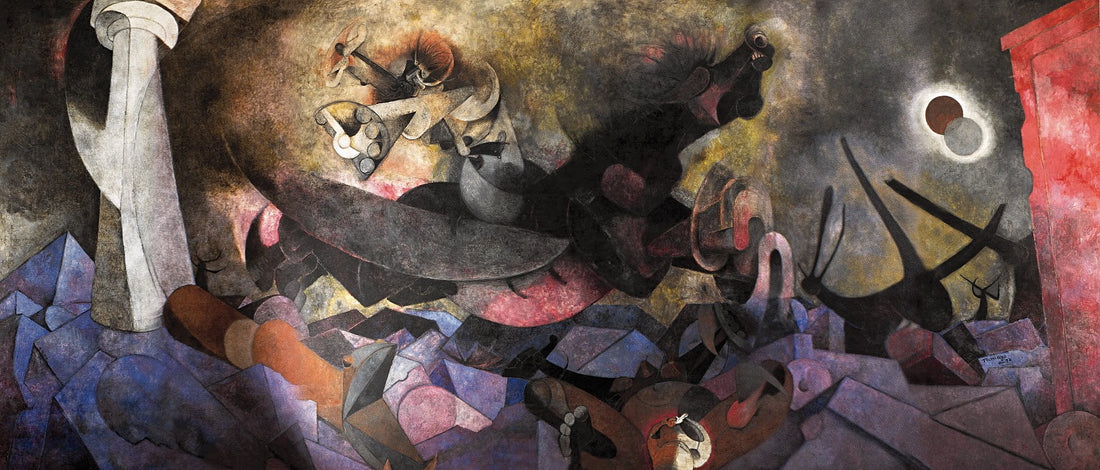My name is E.E. Jacks and I am a contemporary artist. My work encompasses both abstraction and impressionism. I am particularly drawn to creating nocturne and naturalistic paintings. At the beginning of every piece I focus on inserting emotion and motion and then work on top of those layers. I enjoy focusing on shadow and light to create more intensity and movement in my pieces.
Chiaroscuro is an art technique that I use to create contrast and a sense of body or volume in a work. Art across all spectrums employs this marvelous technique. When conjuring up images of chiaroscuro, I begin to think of sunbeams piercing through caves, shadows reacting to flashes of light, and epic displays of moody contrast. I am particularly fond of the visual contrast of brightness against darkness in water.


"Suddenly" and "Jump", E.E. Jacks, 2025, Over the Moon Gallery
The tonal aspects and the power of light balanced against dark on a canvas tie into the early origins of mankind. Perhaps the ancient instinctual fear of darkness and our gravitation toward light reflects in our emotional response to chiaroscuro today.
My great tío, Gonzalo Elosegui, was a painter who was mentored by the Mexican artist Roberto Montenegro. When I began thinking about painting, the first thing I did was absorb and study the work and strong voices of Latin American painters. From Orozco and Siqueiros to Tamayo and María Izquierdo, these artists utilized chiaroscuro in much
of their work, which then influenced my own expression.
Chiaroscuro is defined in art as hyper-contrasted lighting, yet the masterful artist can reach beyond that; drawing in subtlety and form. A wonderful example of this is 'Birth of Our Nationality,' created in 1952 by Rufino Tamayo.

"Birth of Our Nationality", Rufino Tamayo, 1952, Museo Nacional de Arte, Mexico City
The artist Caravaggio was extreme in his use of light and dark (tenebrism), and this was effective given his themes of violence and religious martyrdom. Yet both of these artists used chiaroscuro to reveal the human condition in unique ways.

"The Flagellation of Christ, Michelangelo Merisi da Carvaggio", 1607, Museo di Capodimonte, Naples, Italy
Wilhelm Hammershøi is another favorite of mine, as his work blends the evocative with stark contrast.

"Interior with Woman at the Piano, Strandgade 30", Vilhelm Hammershøi, 1901, Ordrupgaard, Museum, Charlottenlund, Denmark
I will always strive to understand the universe, by revealing, analyzing and capturing moments in the night and in the light! - EE Jacks
"He (the artist) ought to have 'these powerful organs of expression' - colour and chiaroscuro - entirely at his command, that he may use them in every possible form, as well as that he may do with the most perfect freedom...” ~ English Artist - John Constable

Rainstorm over the Sea", John Constable, 1824-1828, Royal Academy of Arts, London
~ written by E.E. Jacks


